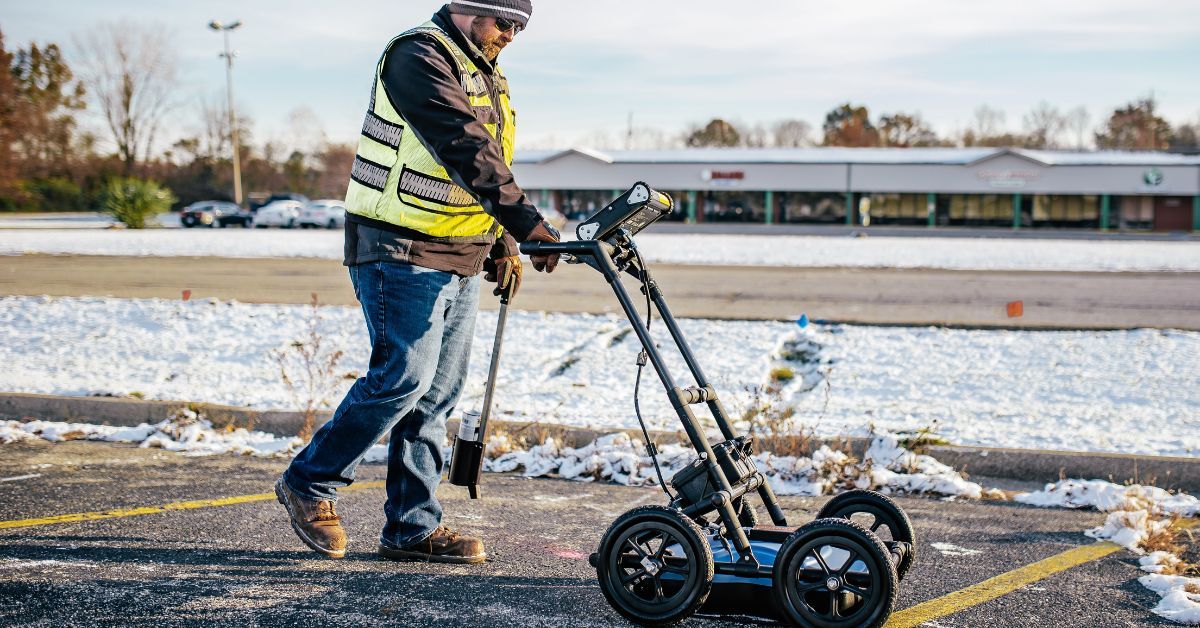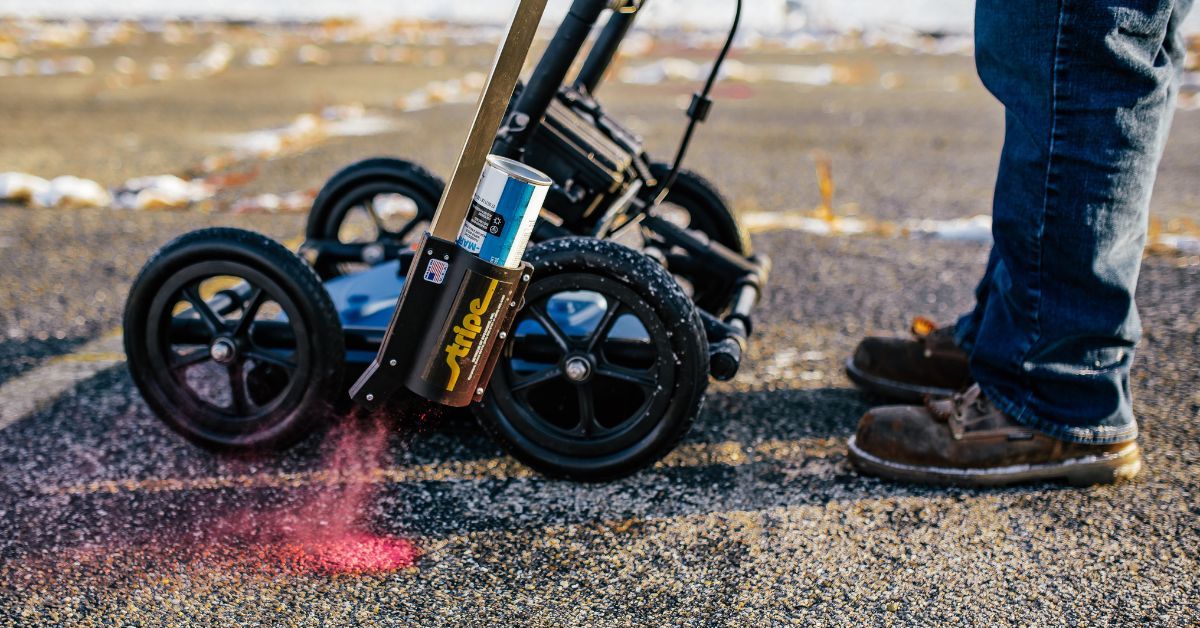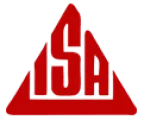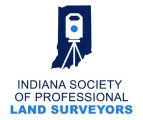
One of the leading technologies today in identifying hidden, environmental hazards is ground-penetrating radar. This non-invasive technology offers unparalleled accuracy and safety, making it a valuable tool across construction, engineering, and environmental fields. Detecting threats, such as underground storage tanks, hidden utilities, contaminated soil, and buried waste, helps manage environmental risks, ensures the safety of workers and surrounding communities, and guarantees efficient construction project timelines.
This post dives into how ground-penetrating radar (GPR) works, how it finds environmental hazards, the advantages it brings, and its applications in real-world scenarios. By the end, you'll understand why this cutting-edge tool is essential and how professionals can leverage it effectively.
Understanding Ground-Penetrating Radar
GPR is a geophysical method that uses radar pulses to detect what lies beneath the surface without disturbing the ground. By emitting electromagnetic signals into the ground through an antenna, it detects changes in subsurface materials, such as objects or voids, as the signals bounce back and the radar unit captures them. Data processing then creates images or maps of the underground environment.
GPR is non-invasive and can identify materials like metal, concrete, plastic, and soil disturbances caused by buried objects or structures. This technology offers a quick, accurate, and safe way to analyze underground conditions without disrupting the environment, making it an effective tool for identifying environmental hazards.
Who Uses GPR?
Many industries utilize GPR technology for its effectiveness and convenience in providing detailed subsurface imaging. The private locating industry often employs GPR to locate utilities and assess structural integrity without causing damage to existing infrastructure. In archaeology, it helps uncover artifacts and buried structures while preserving the site.
Environmental industries also rely on GPR to detect soil contamination, map underground storage tanks, and analyze geological formations. The mining sector also uses it to identify mineral deposits and ensure operational safety. Its precision and non-destructive approach make GPR indispensable for professionals in various fields.
Common Environmental Hazards Detectable by GPR
One of the reasons so many different industries utilize ground-penetrating radar is how it can find all kinds of different environmental hazards. GPR can accurately identify all types of potential hidden dangers, from underground storage tanks to utility lines.
1. Underground Storage Tanks (USTs)
USTs, common in industrial and residential applications, can become environmental hazards if they leak hazardous substances into the soil or water table. GPR can locate these tanks, regardless of whether they are metallic or non-metallic, and assess their structural integrity. This prevents potential contamination and allows for proper remediation planning.
2. Contaminated Soil
Leaked industrial chemicals, hydrocarbons, or disruptive waste contaminates soil, posing significant risks to both human health and ecosystems. GPR can identify areas with abnormal compositions indicative of contamination. Detecting these hotspots early enables effective cleanup before contamination spreads further.
3. Buried Waste and Illegal Dumping Sites
Buried debris from unauthorized dumpsites can wreak havoc on the environment. Chemicals from forgotten or concealed waste can leach into surrounding soil and water systems. GPR helps locate such dumping sites, offering a detailed map of buried materials so cleanup crews can implement appropriate disposal measures.
4. Utility Lines and Pipes
Improperly marked underground utilities pose a significant safety risk. GPR identifies public and private utility lines, locates pipes, and detects cables lacking tracer wires. This capability significantly reduces risks during excavation and ensures smooth project execution.

Advantages of Using GPR for Environmental Hazard Detection
There are many benefits to using GPR to detect environmental hazards over other methods. For one, it's non-invasive but also highly accurate and cost-effective.
Non-Invasive and Environmentally Safe
GPR guarantees accurate detection without requiring any digging or disturbance to the area. This makes it especially beneficial for sensitive or protected environments where excavation is not feasible. It is also safe for public use, emitting only a fraction of the power of a cellphone signal.
High Resolution and Accuracy
Advanced GPR systems deliver detailed and precise visuals of underground anomalies. Real-time imaging allows surveyors to make informed decisions immediately on-site. Whether locating shallow utilities or deeper hazards, GPR ensures accuracy that minimizes guesswork.
Versatility Across Soil Conditions
GPR adapts to a broad range of soil types and conditions. While conductivity and material density affect penetration depth, GPR remains effective in detecting hazards across clay, sand, and rocky terrains. This adaptability means all kinds of operations can deploy it at diverse sites with minimal limitations.
Cost-Effectiveness
By eliminating the need for exploratory excavation, GPR saves time and reduces costs significantly. Its ability to prevent unnecessary disruption, repairs, or damage further enhances return on investment, especially for high-stakes projects like commercial construction or renewable energy installations.
Factors Affecting GPR Performance
While GPR is powerful, its effectiveness depends on several key factors. Its ability to detect buried hazards depends on the type of soil, the penetration depth, and the skill of the operating technicians.
1. Soil Conditions
The electrical conductivity of soil determines how deep GPR signals can penetrate. For instance, dry sand or granite offers excellent conditions for deeper scans. Conversely, clay and moist soil absorb radar signals more quickly, limiting depth and clarity.
2. Depth of Penetration
Depth also depends on the frequency of the GPR antenna you are using. Higher frequencies provide better resolution but shallower penetration, whereas lower frequencies allow deeper scans but with reduced detail. Surveyors must find the perfect balance based on the project's unique requirements.
3. Data Interpretation
GPR data isn't much use without an experienced and skilled technician to accurately interpret the readings. Misinterpreted data mean incorrect conclusions, which might compromise the actions taken to address potential hazards.

Real-World Applications
GPR is transforming industries, from environmental conservation to construction planning. Below are some real-world examples of how certain industries utilize GPR locating services.
Locating USTs at Former Gas Stations
Abandoned service stations can leave behind aging, buried storage tanks. GPR accurately maps their positions and checks for potential leaks, allowing teams to plan safe removal and prevent hazardous spills.
Detecting Contaminated Soil in Industrial Zones
Old manufacturing sites are hotspots for contaminated soil. GPR is instrumental in scanning these zones, marking contamination-prone areas, and enabling eco-restoration efforts without unnecessary excavation.
Surveying Buried Waste at Illegal Dump Sites
On large forested or undeveloped land, spotting an illegal dumpsite is a daunting task. GPR locates buried waste materials and provides detailed data on the materials' volume and spread, making cleanup operations more efficient.
Private Utility Mapping for Airports and Factories
Large-scale infrastructure projects benefit significantly from GPR when mapping underground utilities. Airports and manufacturing facilities frequently use GPR to identify unmarked water, electrical, or fiber optic lines without disrupting workflows.
Partner With Mason Private Locating for GPR Locating
Detecting environmental hazards is no small task, but GPR offers a cutting-edge solution to this challenge. Trusting a reliable, expert team is crucial for construction teams, engineers, and environmental professionals.
At Mason Private Locating, we bring years of experience and advanced technology to help you locate and mitigate environmental hazards reliably. Whether finding USTs, analyzing soil contamination, or mapping buried utilities, our GPR services ensure precision and peace of mind. Contact Mason Private Locating today to explore how we can assist with your next project.













